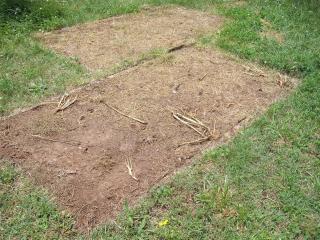I am totally unsure about what type of coop to buy! So let me ask about chicken tractors:
1. Tractors seem to go against the standard "10 sq ft of run per bird" rule. How do the chickens stay happy in that little space?
2. How often do you need to move a tractor to ensure the grass below stays relatively fresh? And how long does a grass patch need to fully recover before you can put the tractor back on it?
3. If I'm always moving a tractor to a fresh patch of grass, where do the chickens get their dirt for a dust bath?
4. Do they tend to be generally secure from predators?
As always, thanks for the insight!
1. Tractors seem to go against the standard "10 sq ft of run per bird" rule. How do the chickens stay happy in that little space?
2. How often do you need to move a tractor to ensure the grass below stays relatively fresh? And how long does a grass patch need to fully recover before you can put the tractor back on it?
3. If I'm always moving a tractor to a fresh patch of grass, where do the chickens get their dirt for a dust bath?
4. Do they tend to be generally secure from predators?
As always, thanks for the insight!





